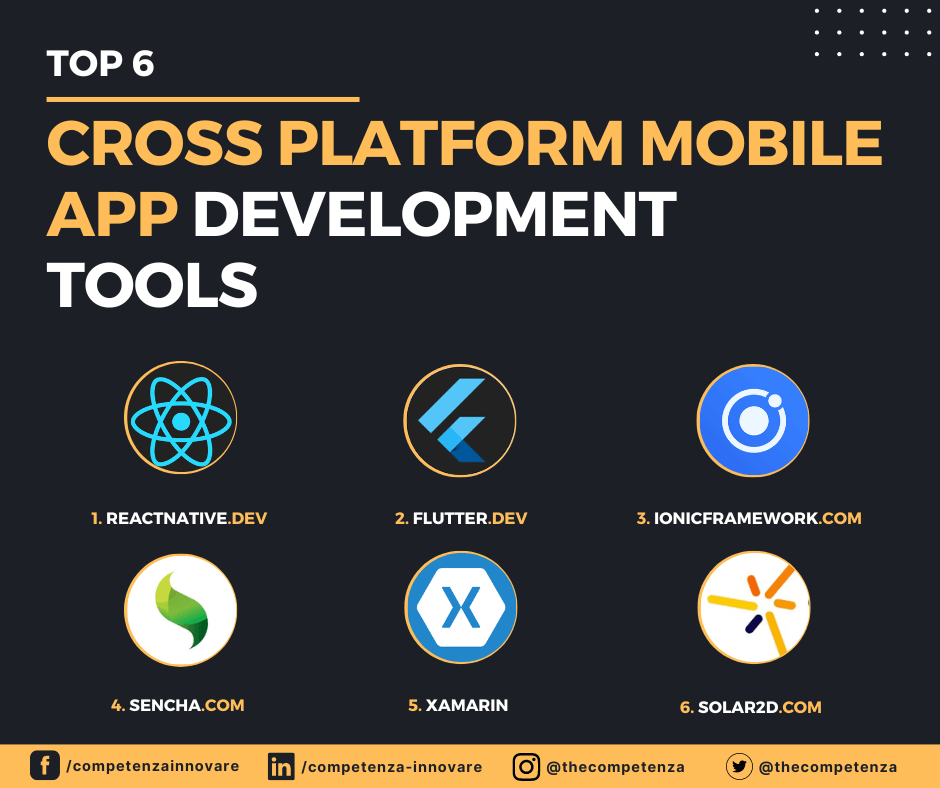With the continuous wave of advancements in the app developing industry, it is a “need” to come up with solutions that cater to the demand of end-users. The biggest competition is amongst smartphone app companies.
➤ What makes an ideal app?
When it is easy to navigate and is user-friendly. In other words, the UX should be at par with the current demands.
It leads to more revenue with cost-effective benefits! And one of the most prominent ways to achieve this is “Cross-platform app development”.
Cross-platform app development is a method in which the app created operates smoothly on a multitude of platforms like iOS, Windows, and Android.

➤ How is it done?
The solution is formulating and using a single codebase that is compatible with a variety of operating systems.
Some common examples of apps developed with the Cross-platform method are-
♦ Google Ads
♦ Skype
If summed up, it can be defined as “Developed in one, utilized for all”
Speaking of the current market situation, we have now access to a myriad of tools and resources that a developer can use.

The topmost are:
♦ Ionic
♦ Flutter
♦ ReactNative
♦ Xamarin
These frameworks create a base or foundation with the help of a single code that runs seamlessly across all platforms.
➤ Cross Platform App Development Advantages
1. For the Users
Consistency: Having the same kind of interface on different platforms (be it phone, tablet, windows, etc) creates a sense of familiarity for the user.
Every consumer expects the same operating ways on iOS-based tablets their office desktop or even on the phone!
A mobile app is successful only when the user is satisfied and happy to use it.
2. For the Business
♦ Better analysis and tests:
Mobile apps that are not created based on the hybrid platform method take up more energy and time when measuring their progress, feedback from customers, and data collection.
The ones that are created with cross-platform app development techniques provide the result much faster.
♦ Flexibility:
If a company hires different developers for each platform, then managing gets hard.
However, in this case, since the application runs on a single codebase for all kinds of operating systems, flexibility is achieved.
The task narrows down to a single team of developers who efficiently utilize the tools.
♦ Vast reach:
A huge customer base can be established only when the app is easily accessible on different mobile application stores.
It promotes a wide reach, recognition, and popularity.
This is a huge contributor to the success of an organization. Facebook, Walmart, and Bloomberg are a testament to the aforementioned statement.
♦ Expenses are minimized:
Adopting a cross-platform framework to develop the required app not only saves time but also helps in saving a lot of additional expenses.
Launching the initial version to observe how the customer uses and feels about the mobile app can also be done without investing loads on the upfront cost.
???? You Must Also Read: Cost to Develop a Mobile App – A Detailed Guide
3. For the Smartphone App Developers
♦ One base code:
Imagine how easy it gets for the developer to create a multi-platform smartphone app with just “one” source code.
Sounds time-saving and efficient right? It also reduces the time gap between building the app and launching it in the market.
♦ Quick prototyping:
Since in hybrid-platform mobile application development, the development is quick (single code-based), the prototype gets very easy and effective.
♦ Maintenance gets easy:
Be it anything, enhancements in the app, “bug fixes” or minor changes, all can be done easily! All credits to the “single” codebase framework.
♦ Consistency:
The “One source-code for all” method brings inconsistency in the design. The user interface doesn’t experience major differences across different platforms.
Above all, the smartphone app looks well-built and hence, attracts the desired end-users!
???? Interesting Fact: Roughly one-third of mobile developers use a cross-platform framework
➤ Cross Platform App Development Disadvantages
♦ Chances of slow application:
Creating a cross platform app development with just one codebase sounds easy.
But in reality, it might reflect otherwise. The developer has to use cross-compliance while creating the application and the result can be a slow-working application.
♦ Integration Barriers :
Since the mobile app runs on all kinds of platforms, the task to integrate the app with regular settings gets tough.
And as a solution, one might opt to source a third-party cloud-based smartphone app which could be a threat to the existing developed app.
♦ Delayed updates:
Updates in single codebase-driven apps could be late due to the lack of the latest features in the framework.
That’s why, whenever a particular feature is added to the OS, the cross-platform mobile apps take time to show visible changes in the latest version of the release.
♦ Individuality gets compromised:
What serves as an advantage also is a disadvantage here. Since the kind of layout, design, and user experience is maintained constant across all the platforms, the uniqueness becomes secondary.
The mobile app fulfills the purpose of familiarity but in this case, versatility cannot be achieved.
♦ Problems while switching:
The majority of hybrid frameworks are built with the help of JavaScript.
Now the problem arises when platforms are switched. The reusable code becomes unusable when the developer moves from one platform to another!
???? Interesting Fact: As per Statista.com, Flutter is one of the most highly used frameworks for hybrid app development (42%) followed by React Native (38%), Cordova and Ionic (16%), and so on…
Gone are the days when companies were operating traditionally. With the vast development in these past decades, it is an undeniable fact that customers can make or break the organization.
Hence, one of the pillars of success for a company is to keep its existing users happy while welcoming more.
We live in an era where digital gadgets are an inseparable part of our lives.
Therefore, the easiest way to reach the target audience is by creating apps that serve their purpose.
And the demands need to be met, irrespective of the operating systems. Be it Windows, iOS, Android, Kindle, or any other.
???? You Must Also Read: 13 Most Loved Mobile Apps Built With React Native
Developing apps in native ways brings a lot of challenges for the developers as there are separate sets of codes and settings for every single operating system.
Hence, more energy and time goes into building it.
The most efficient solution to it – switching to a cross-platform application development approach.
It is a huge time-saver and also helps to reach a wider audience by just operating on a single source code!
It is the responsibility of developers to determine the kind of approach for the app that is to be created.



